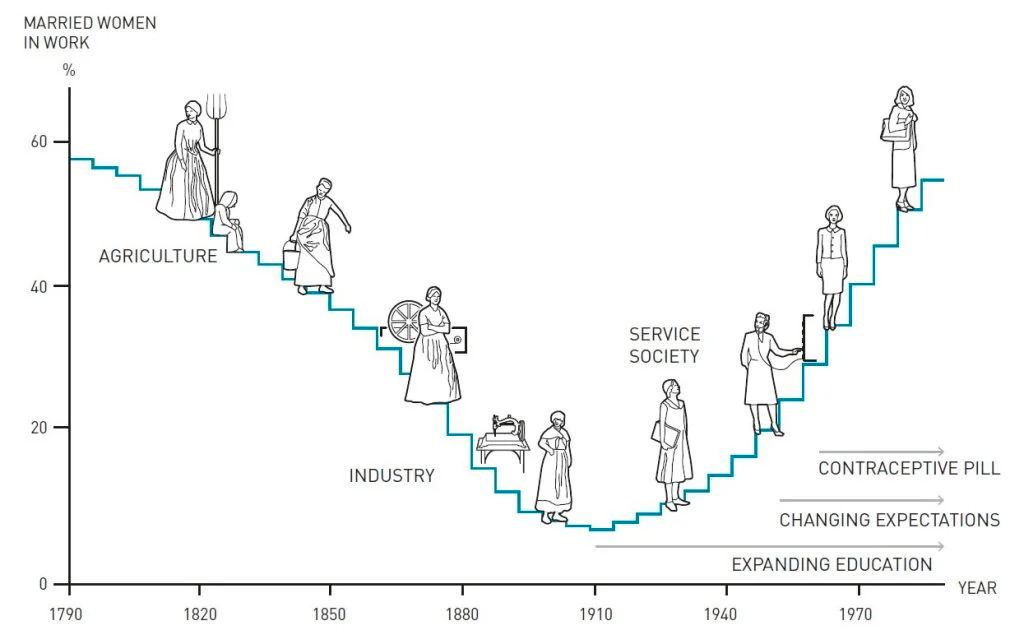Claudia Goldin Receives Nobel Prize in Economics for Her Research on Women in the Workforce
Claudia Goldin is the third woman to win the prize.
What is the Nobel Prize in Economics?
The Sveriges Riksbank Prize in Economic Sciences, also known as the Nobel Prize in Economics, was established in 1968 by the Swedish central bank in memory of Alfred Nobel, the founder of the Nobel Prize. It's awarded annually and is considered a prestigious recognition in economics, alongside the original Nobel Prizes (Physics, Chemistry, Medicine, Literature and Peace). Like the other Nobel Prizes, it is awarded on the recommendation of committees of experts in the respective fields.
The prize is usually awarded for outstanding research, contributions or advances in various fields of economics, including but not limited to microeconomics, macroeconomics, economic theory, finance and econometrics. Recipients of the Nobel Prize in Economics have significantly impacted our understanding of economic phenomena and have often contributed to the betterment of society through their work.
Before Goldin, two women had won the Nobel Prize in Economic Sciences since its inception: Elinor Ostrom (2009) and Esther Duflo (2019).
Understanding Claudia Goldin
Claudia Goldin has long studied the differences between men and women at work. Her significant research has been going on for over 20 years and has significantly affected how we understand economics and society.
“Goldin is unique for bringing two fields of economics together”
Nobel laureate Claudia Goldin spent a lot of time studying something very important: how men and women are treated differently in the workplace. She found that globally, fewer women work than men, and when they do, they often earn less. This inequality has essential economic and social implications. She used economic ideas and historical facts to understand why these differences have persisted for so long. She has presented new and often surprising facts by trawling through the archives and compiling and correcting historical data.
Discovering the U-shaped pattern
Goldin's first observation was that women's employment rates were often misreported in existing data. For example, it used to be common for women's occupation to be listed as 'wife' in censuses and public records, but even if they were married, it did not automatically mean that they did no work other than domestic work.
One of the most exciting things Goldin found was that women's participation in the workforce has gone up and down in a U-shaped pattern over the past 200 years. First, more women worked on farms, but fewer did so as factories became common. Then, as the service sector grew, more women entered the workforce. Goldin says this happened because things were changing in society and how people thought about women's roles at home and work.

Education and birth control
Goldin also showed that education and the invention of the contraceptive pill were really important for women's careers. When women could get a good education and control when they had children, they could make better choices about their jobs. This broke old rules and gave women more opportunities to work. The fact that women’s choices have often been, and remain, limited by marriage and responsibility for the home and family is at the heart of her analyses and explanatory models.

The gender pay gap won't go away.
Although more women are educated and working, Goldin's research shows that women are still paid less than men. It's not just because of their education or chosen jobs but also because they are often paid less when they become mothers. Goldin's work helps us understand that this happens because of what society expects of women and because work rules are not very flexible for parents. It's a complicated problem.

Goldin's enduring impact
Claudia Goldin's 2023 Sveriges Riksbank Prize in Economic Sciences award recognises her remarkable contributions to economics and underlines the urgency of addressing gender inequality in the labour market. Goldin's pioneering research provides invaluable insights into labour market inequality's historical, social and economic determinants and inspires efforts to create a fairer future for all. Her work is a powerful reminder of the transformative potential of economics in shaping a more just and inclusive world.
Resources
Our blog
Latest blog posts
Tool and strategies modern teams need to help their companies grow.
